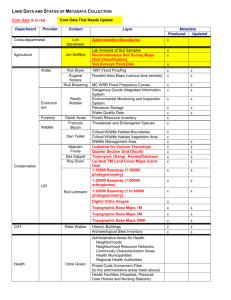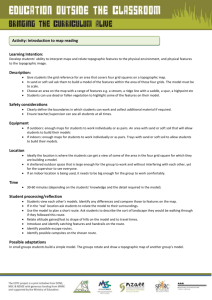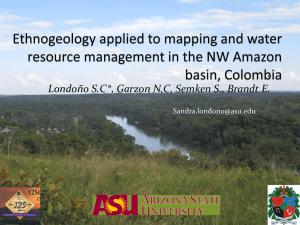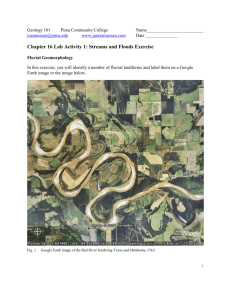GEOLOGY 377-Surface Processes
advertisement
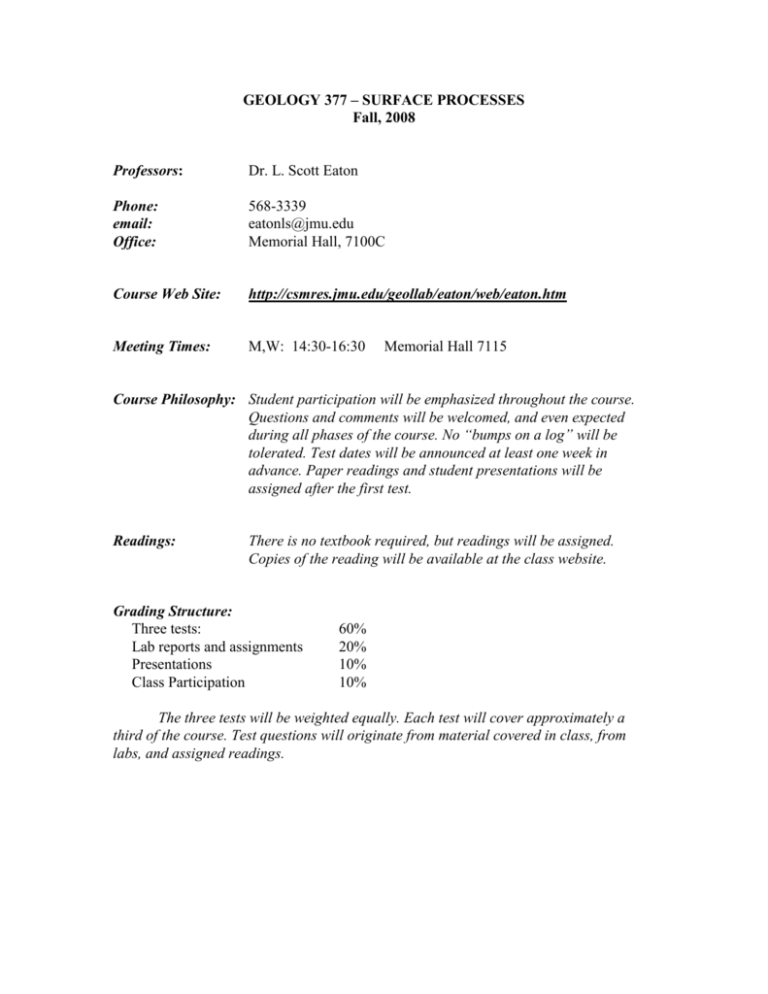
GEOLOGY 377 – SURFACE PROCESSES Fall, 2008 Professors: Dr. L. Scott Eaton Phone: email: Office: 568-3339 eatonls@jmu.edu Memorial Hall, 7100C Course Web Site: http://csmres.jmu.edu/geollab/eaton/web/eaton.htm Meeting Times: M,W: 14:30-16:30 Memorial Hall 7115 Course Philosophy: Student participation will be emphasized throughout the course. Questions and comments will be welcomed, and even expected during all phases of the course. No “bumps on a log” will be tolerated. Test dates will be announced at least one week in advance. Paper readings and student presentations will be assigned after the first test. Readings: There is no textbook required, but readings will be assigned. Copies of the reading will be available at the class website. Grading Structure: Three tests: Lab reports and assignments Presentations Class Participation 60% 20% 10% 10% The three tests will be weighted equally. Each test will cover approximately a third of the course. Test questions will originate from material covered in class, from labs, and assigned readings. GEOLOGY 377 - SURFACE PROCESS The Tentative Plan Introduction and Overview of the Course A Review of Rocks and Minerals Plate Tectonics and other Internal Forces Rock Weathering Introduction to Soils Soil Orders and Series Soil Texture Lab Soils Field Trip Water: A Unique Substance Fluvial Systems Fluvial Systems Lab Fluvial Systems Field Trip Karst Systems Geology of Virginia Topographic Maps Practical Exercises with Topographic Maps Ground Water Slope Processes Coastal Processes Glacial and Periglacial Processes Denudation of Landscapes Geology 385 - Surface Processes Goals and Objectives GOAL I. Provide students with a brief background in plate tectonics and the major constituents of the earth’s crust. Objective A-Summarize the major processes involved in the Wilson Cycle. Objective B-Have students identify the major rock forming minerals using physical properties. Objective C-Describe the processes of formation of the most important rock types comprising the earth’s crust. Objective D-Provide students the opportunity to apply hands-on principles in the identification of examples of igneous, sedimentary, and metamorphic rocks. GOAL II. Introduce students to the construction and use of topographic maps. Objective A-Introduce the concept of using equal-elevation contour lines to visualize three dimensional space. Objective B-Cover the methodologies involved in producing topographic maps. Objective C-Have students construct topographic maps using surveyed elevation points. Objective D-Learn to accurately determine earth surface elevations, distances, slopes, and relief using topographic maps. GOAL III. Discuss the role of fluvial systems in landscape evolution. Objective A-Define the chemical and physical properties of water. Objective B-Apply the properties of water to the dynamics of the hydrologic cycle. Objective C-Study drainage evolution and the genesis of fluvial landforms. Objective D-Investigate earth surface erosion and denudation rates and the role of running water. GOAL IV. Study rock weathering and the evolution and properties of soils. Objective A-Examine the physical and chemical processes that weather rocks. Objective B-Discuss soil horizonation and soil profiles. Objective C-Observe and experience physical properties of soils such as texture, structure, color, and plasticity. Objective D-Introduce soil taxonomy and how this classification system is used. Objective E-Observe soils in the field for horizonation, profile development, texture, structure, color, and land use. GOAL V. Survey the spectrum of earth surface processes other than fluvial processes and examine their role in landscape evolution. Objective A-Investigate groundwater processes at the earth’s surface. Objective B-Examine types and results of slope processes. Objective C-Explore the causes and effects of marine coastal processes. Objective D-Examine the role of mountain glaciers and continental ice sheets in altering the earth’s surface.

